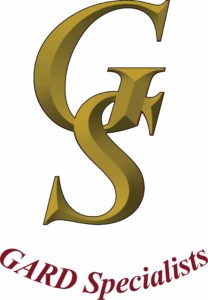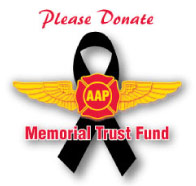The Way Forward; Offered by Jim Barnes
In the early 90’s the State of California commissioned an independent study conducted by the Spalding Group. Their approach was to go directly to Ground Firefighters and ask them what they needed from the air program. The report contained a lot of statistical data, aircraft performance capabilities, but most importantly the viewpoint of Incident Commanders and Firefighters. Their consensus was that “we need the mix of aircraft but more of everything”. It was a common-sense approach to guiding the program forward.
For the Associated Aerial Firefighters to remain relevant and achieve the goal of supporting our boots-on-the-ground it is imperative that we stay at the cutting edge of advancing technologies, new equipment, and changing strategies that address the needs and improve our ability to help our courageous Ground Firefighters.
Contracting:
One of the major obstacles to that end is the lack of stabilization within the aerial firefighting industry. Too often Industry Companies invested millions of dollars in research and development, building new systems and platforms, in response to stated needs, only to lose those precious dollars because of a sudden “paradigm shift” in Government policies.
A problem induced by government can more effectively be addressed by political action. A powerful, credible NGO (non-government organization) that represents all stake holders can help prevent serious damage to our entire industry and in turn our firefighting capabilities.
All the Commercial Industry Companies, fixed-wing, rotor-wing, large and small, that provide aerial firefighting platforms crews and maintenance support, must be recognized as a vital component of our Country’s Civil Defense because they are. No elements of our standing military or their reserve components will be completely dedicated to protecting the homeland from fire.
Effectiveness:
It is also past time to recognize the professionalism and effectiveness of the commercial aerial firefighting fleet. The capability of any aircraft is only as good as the crew that fly’s it. Piloting a firefighting aircraft requires dedication to the mission, extensive training, and thousands of hours of experience developing a unique skill set. A pilot from any other walk of aviation embarking on a career in aerial firefighting can wisely apply the skills they have acquired then check their prior credentials at the door. It’s not rocket science, but it is unique.
You need look no further than the commercial C-130 platforms operating this year. These airtankers, with state-of-the-art retardant systems, experienced Initial Attack crews qualified to take independent action or blend with the fleet, cannot be equated or replaced by the limited surge capability of the MAFFS or MAFFS clones
Training:
“If you think training is expensive, try going without it”. Unknown author.
Training is expensive but compared to loss of life or lack of capability it is the greatest bargain we can invest in. Our Board Members need to craft a position paper encouraging our Agencies and elected official to apportion more funding for operational training. A military pilot trains for hundreds of hours for a ten-hour mission. Aerial Firefighters train ten hours for hundreds of hours of missions. We need to do better.
AAF:
Our annual meeting in Reno has come lightyears in providing presenters with technical expertise in accident investigation, cutting edge avionics, and educational presentations by distinguished Aviators. This is due primarily to the hard work and technical expertise of one Board Member, Mr. Dave Wardal.
Board Member Jerome Laval maintains contact with the international sector of aerial firefighting from Paris.
We would like to encourage members regardless of company or agency affiliation or type of aircraft you serve in to participate in the process and consider serving as a Board Member now or in the future to support the aerial firefighting mission. We will have elections at the end of our meeting.
Former or retired aerial firefighters, ground firefighters and agency officers can play a vital role in advancing the cause of Air Attack. Many times, active pilots, government employees or representatives of industry companies are restricted from any political action or public statement. This is understandable and correct. It is important to observe protocol so that inadvertent or intentional injury to persons or industry companies does not occur.
Retired persons don’t have the encumbrance of being affiliated to any employer or agency so their actions are not restricted by company or government policies and they do not reflect on these organizations directly. In order to act in behalf of the Associated Aerial Firefighters in any capacity strict adherence to representing a true consensus of our organization must be the governing issue. I intend to follow that principle fully.
I am exceedingly proud of our Nation’s Aerial Firefighters and I am committed to supporting them in any way that I can.
Sincerely; Jim Barnes











Speak Your Mind
You must be logged in to post a comment.